The Curtiss Model N was an early American trainer aircraft developed in the 1910s by the Curtiss Aeroplane and Motor Company, primarily used by the U.S. Navy. It played a significant role in the evolution of naval aviation training just before and during the early part of World War I. This single-engine biplane had a two-seat tandem cockpit, with space for both student and instructor with several versions (N-8, N-9, N-9H Floatplane. It was the first successful seaplane trainer for the U.S. Navy, pioneering naval aviation training methods and techniques in carrier and water takeoff and landing training. One example can be found at institutions like the National Naval Aviation Museum in Pensacola, Florida.
The Curtiss N-9H was a seaplane version of the famous Curtiss JN-4D trainer used by the U.S. Air Service during the First World War. To make the conversion, a single large central pontoon was mounted below the fuselage, with a small float fitted under each wingtip. These changes required a 10-foot increase in wingspan to compensate for the additional weight. During the war, 2,500 Navy pilots were trained on the N-9H. In addition to training a generation of Navy pilots, the N-9H was used to develop tactics for ship-borne aircraft operations in 1916 and 1917, using catapults mounted on armored cruisers. After the war, the airplane was again employed to successfully demonstrate a compressed air turntable catapult. In July 1917, several N-9Hs were acquired by the Sperry Gyroscope Company and were used as test vehicles for aerial torpedo experiments conducted for the Navy's Bureau of Ordnance. The N-9H was withdrawn from the U.S. Navy inventory in 1927 after ten years of exemplary service.
The JN first Flew in 1915, specifically designed as a trainer with two pilot's cockpits in tandem with double commands, single inline engine and no armament. It was powered by an in-house OX-5 V8, 90 hp engine. The "Jenny" (a play with the "JN" acronym) had a fuselage of 27 ft 4 in (8.33 m) for a wingspan of 43 ft 7 in (13.28 m). To reach a top speed of around 75 mph (121 km/h) and reach a range of 200 miles (320 km) for a service Ceiling of 6,500 ft (2,000 m). The JN-4 became the primary trainer aircraft during WWI and until the late 1920s, for the U.S. Army Air Service, Navy (N) but was also largely distributed to UK, Canada (as the "Canuck"), and was massively used by the RFC as well.
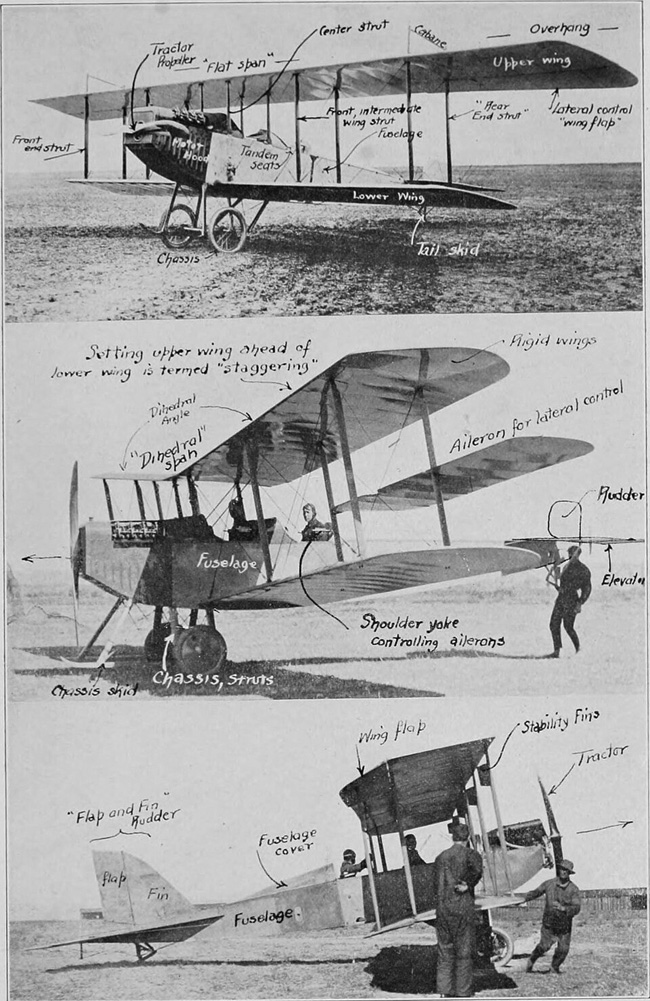
The most produced of all versions was the KN-4D variant, but a good dozen were created, often testing various engine configurations, such as the . Overall, 6,813 were manufactured until contracts were terminated in November 1918. After WWI, surplus Jennys were sold cheaply, making them central to the barnstorming era of the 1920s and Stunt Icon when pilots performed aerial stunts across the U.S. It became the primary choice for daredevil pilots, wing-walkers, and aerial circuses in the 1920s. But it also helped laying the groundwork for civil aviation in the United States. Many were also transformed as agriculural flytox dispensers or mail planes, pioneering the U.S. airmail service as well as spawning hundreds of flight schools across the continent.
It was still used by the military until 1927, but was still around in civilian service in the late 1930s. It was also largely exported: Argentina, Australia, Brazil, Canada, Cuba, Nicaragua, China all used it as trainer or fore other roles. Being such an icon of US aviation it is also today the bestpreserved of any aircraft of that era, with more than 50 in existence in various museums.
The Model N was a two-seat biplane roughly similar to the Model J, but which differed in the airfoil and placement of ailerons, mounted between the wings. The model N was powered by a 90-100 hp Curtiss OX inline engine. However to legal issues with the Wright brothers (who would have guessed) over the use of ailerons, meant the Model N was modified, by locking the ailerons, increasing the dihedral to 7 degrees. The exercise was to prove it could be flown without ailerons or wing warping.
The most prolific variant among the N types was the N-9, a floatplane equipped with a single central pontoon (axial float), mounted under the fuselage. A small float was fitted under each wingtip as well. Due to the additional weight of the pontoon, structural and aerodynamic changes were done and the final producr was extensively tested in a wind tunnel just developed at the Massachusetts Institute of Technology (MIT). The N-9 thus became the first US naval aircraft which the design was worked out in a wind tunnel and the resulting data incorporated into its design. The wingspan was stretched by ten feet (three meters), and the fuselage lengthened, with the tail surfaces enlarged, stabilizing fins added on top of the upper wing to crown it all up as a result of these tests. The N-9N's engine was a 100 hp (75 kW) Curtiss OXX-6 engine, an improved version of the Curtiss OX.
Curtiss earned with this model, demonstrated to the Navy top brass, an initial contract for 30, in August 1916, plus 14 were ordered by the United States Army, which wanted its own seaplane operations, albeit limited in scope and mostly over rivers and the great lakes. However tests pilots rapidly complained the aircraft was underpowered. Curtiss replaced the initial engine with a 150 hp (112 kW) Hispano-Suiza, manufactured in the US under license, by Wright-Martin's at its Simplex division. Later the company was renamed Wright Aeronautical. This new floatplane was was redesignated N-9H. A total of 560 N-9s were of all versions built during the first World War, of which the bulk were "H" models. More so, only 100 were actually built by Curtiss, the remainder under license at Burgess Co., Marblehead in Massachusetts. 50 more were assembled also after the war, from spare components and engines kept by the USN Naval Air Station Pensacola in Florida, the main base for US floatplane during the war.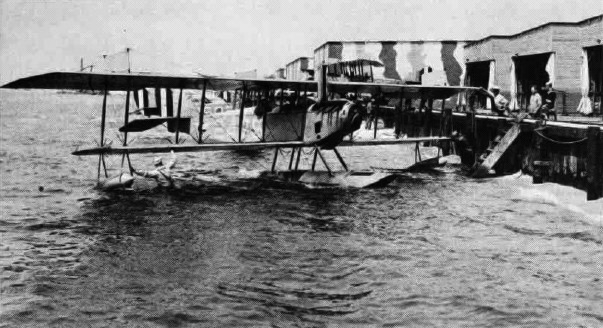
The "seagoing Jenny" lived in the shadow America’s most famous airplane arguably at the time, oven among allies. The N-9 seaplane remained in this family relatively obscure though, in spite of having trained hundreds upon of hundres of US Navy pilots in that era, many that became future advocate for aircraft carriers and naval air power in the interwar. The N9 remained in fact the primary trainer of the USN for nearly a decade. The common ancestor of the N and JN went back to the Curtiss Model J of 1914 and before that in 1912 it was realized that open “Pusher” designs were on the way out, Tractors with an enclosed fuselage was the way forward. Burgess models at the time tended to show this, creating a new trend, and following this, Curtiss developed the Model G.
This was humble benginning and only two were built. Glenn Curtiss than hired an alread experienced designer in tractor designs, B. Douglas Thomas of Britain, former Avro and Sopwith designer, notable for having turned out highly successful tractor designs. Thimas worked on the Model J, and the first Curtiss plant was established at Hammondsport, New York. Next came the J emerging from this new plant and same team. Next came the Model N, with the K and M being contemporary flying boats but the L was a triplane tractor which appeared from 1916. The J was the earliest design t be completed and proved to be a most significant airplane. It re-establish Curtiss as leading U.S. manufacturer and was well standardized for its aerodynamic and structural soluton, which laid a pattern for all subsequent American tractor biplanes.
The J's control system became the most elaborate Curtiss feature, so far, with ailerons operated by a shoulder yoke, with the pilot leaning in the direction that he wanted the airplane to bank. At the same time he operated the rudder with the steering wheel. There were no rudder pedals. The major change later was to adopt a more efficient airfoil and minor structural adjustment for the Model N compared to the J. This combined the best features of several airplanes, into a single new model. Curtiss professed the fusion of the best features of the J and N designs created what he called the JN-1.
This was a winning design, far and wide. As it was common in anflo-saxon culture about marine models, not aircraft in general, they were regarded like boats, having feminine characteristics and personalities and they were given unofficial feminine names. JN then became "Jenny" and a legend was born. N-9 became rugged enough to stand the abuse that all seaplanes must faced, having no shock absorbers, and making water landing on rough water or at speed making water as hard as a concrete ground. More so, Curtiss wanted these models to be catapult launched as well, and demonstrated such tests on deck-mounted catapults for the navy.
Meawhile the U.S. Army, was so impressed by the JN it obtained, before the US went at war, an already eye-watering contract for this at Curtiss, and from April 1917, this was multiplied several fold to reach the unprecedented 6,163 to the end of World War I. This made the fortune of Curtiss and its various sub-contractors. Also, many were also built in Britain and Canada, culminating to 6,759. In that family, the N model followed a completely parallel development, fully independently, and did not entered this count. Despite its modest production, it was used both both by the Army and Navy. Both models essentially had the same state-of-the-art refinements from the N-8 and first JN-4 in 1916. They were virtually indistinguishable from each other externally. The N had a shoulder yoke aileron control system, the JN-4 used the “Deperdussin” control in which the wheel operated ailerons and the rudder, controlled by the pilot’s feet, through a rudder bar. The JN-3 had this system and was fielded in mass by the British Royal Flying Corps (R.A.F.) and Royal Naval Air Service (R.N.A.S.) as well.
The lower wing span was increased the same way, by adding separate 5-ft panels, on either side of the fuselage. The outer ends were anchored to the upper center section, using extra struts for three bays on each side, instead of two for the land-based version. The JN-4H wing used the Eiffel 36 airfoil, but the the N-9 insteed swapped it for the R.A.F. 6. wing profile. The N-9 were could endure what seaplanes could in general, having no shock absorbers, and could land on rough water, and were also reinforced for catapult launches. The Prototype N-9 had JN-4B tail surfaces and a deeper nose compared to the 90 hp powered Ns and JNs, competed by flat bottom radiators. There were also an additional aileron area,obtained by moving the trailing edge of the aileron aft of the trailing edge of the upper wing.
Each change generated a requirement for extra adaptations: The cutout for the ailerons in the outer wing panels had the same size as on short-wing models but to have additional aileron surface, there was the need to increase the chord of the aileron. There was also more vertical tail area. In the end, the JN-4B fin was enlarged, by humping the straight line of the leading edge, adding extra area without changing base dimensions, or relocate already drilled fittings.
However, performance could be improved considerably and more advanced use could be made of the airplane after the American built version of the 150 hp French Hispano-Suiza engine became available from the Simplex Automobile Division of the Wright-Martin Company late in 1917. These engines were known as the Wright Models A and I (150 hp) and universally referred to "Hissos". The N-9 fitted with these powerplants were identified as N-9H. However these engines needed increased cooling and this seems a step backward in aerodynamic refinement, since the benefit of an inline engine was aerodynamism in the first place. Instead of a nose radiator, the first N-9H had two bulky side-mounted radiators. Production reverted to a single vertical radiator on top of the fuselage, ahead of the wing, projecting partly above it. For extra streamlining, a large diameter shallow spinner was installed on the nose. The "Hisso" powered JN-4H’s and JN-6’s, and they were able to use nose radiators like for the original N-9 in shape due to higher landplane speeds, so less cooling necessary. Fuel capacity amounted to 20 U.S. gallons (N-9) or 23 gallons (N-9H).

The first flight of the Model N was in mid-1915. The Army purchased it only for evaluation, repossessed by Curtiss due to legal issues with the Wright brothers. The N-9 was be accepted by the Navy training school at Pensacola NAS (essentially the first complete naval air station) in Florida. Next, others were distributed to various State Naval Militia units before April 1917. As for their color scheme, this was plain fabric, clear-doped with by times a coat of varnish giving it an amber shade over a light buff/off-white general finish.
By 1918-19, coloring was a standard light gray over as per USN regulations. These shades varied between manufacturers and repair stations. In 1920, this became all silver, with high visibility orange-yellow on top surface, upper wing. The roundels also changed to integrated a star. Navy airplane identification by late 1917 until 1924 used the serial number in large regulatory USN letters, on each side of the fuselage in white over gray and sometimes in black over the later silver finish. The National insignia by April 1917 was unregulated and varied, and some early N9 had a blue anchor marking on each side of the rudder and under the wings. The star-in-a-circle arrived by April 17, used on then wings only, initially painted full-chord of the wing and inboard of the aileron. The N-9 lacked lower wing ailerons so lower wing marking were located under the upper wing marking. The rudder marking had the regulatroy entente powers red, white, and blue stripes. By January 1918 was introduced the tricolor circle with a swap of colors of the Allies, which resembled the Russian ones, albeit the latter had circles of varied proportions. Red circle outside, blue, and white center, which stands until August 1919, and the star and rudder stripe became standard.
The N-9, apart the H-9 flying boat, ended pressed into greater numbers than any other USN airplane model until the N3N trainer in the 1930s. 560 N-9s were constructed by November 1918, only 100 by Curtiss as seen above, most were actually made by Burgess Company at Marblehead. There was an additional order for 1200 for Burgess that was cancelled by December. The Army also purchased 14 N-9s in 1917 and a few N-9Hs traded for a JN-4H landplanes. The N-9 was the first to entered the civilian amrket, first advertised in commercial catalogs.
50 more N-9H’s were created by assembling spares or salvaged parts from damaged models (in accodent notably) at Pensacola. They were given new serial numbers, leading to complete airframes. The N-9 were not declared surplus at the end of the war and like the "Jenny" in general, they ended in part on the civilian market, with their own share of barnstorming field or remaining in service with the Navy, as primary and gunner trainer until replaced by the Boeing NB-1’s and BN-2 from 1924. They were finally retired and completely replaced by the Consolidated NY-1 from 1927. That made still for ten years in service. Some civilian services used these for much longer.
Aviators and even the manufacturer stated that the N9 could not be looped. So USMC daredevil Francis Thomas Evans, Sr., believed it was possible. On 13 February 1917, he flew his N-9 over the Gulf of Mexico off Pensacola and succeeded on his 4th try. This was the first of a US seaplane but Polish aviator Jan Nagórski did the same on 17 September 1916 on a Grigorovich M-9. In 1936, he was awarded the DFC, notably by pioneeing stall and spin recovery techniques on the N-9. After 3 loop attempts, he stalled before reaching loop apex and fell into a spin. He found that releasing back-pressure on the stick and aggressively applying opposite rudder to the direction of the spin was the correct recovery technique, something previously thought impossible. In fact these techniques are still used by aviators around the world today.
Probably the greatest achievement of the Curtiss N9 was the fact 2,500 U.S. Navy pilots trained with it. A whole generation of future navy pilots were shaped by this vice-free aicraft. The N9 was also used to help develop shipborne aircraft operation and ship-mounted launch catapults. In 1917, N-9s were brought to the Sperry Gyroscope Company for conversion to the Hewitt-Sperry Automatic Airplane configuration. They were used to flight test an experimental new autopilot system, to be ported on the first pilotless "aerial torpedoes". Another forgotten contribution of the bird.
The U.S. Navy retired the N-9s in 1927 as seen above, far less survived than the JN. In fact one single example is now a part of the National Air and Space Museum collection. It was previously on display at the Museum of Science and Industry in Chicago and later transferred back to the U.S. Navy via the National Air and Space Museum. The Naval Air Engineering Laboratory in Philadelphia had it fully restored in 1966.
The Curtiss N-9H was a seaplane version of the famous Curtiss JN-4D trainer used by the U.S. Air Service during the First World War. To make the conversion, a single large central pontoon was mounted below the fuselage, with a small float fitted under each wingtip. These changes required a 10-foot increase in wingspan to compensate for the additional weight. During the war, 2,500 Navy pilots were trained on the N-9H. In addition to training a generation of Navy pilots, the N-9H was used to develop tactics for ship-borne aircraft operations in 1916 and 1917, using catapults mounted on armored cruisers. After the war, the airplane was again employed to successfully demonstrate a compressed air turntable catapult. In July 1917, several N-9Hs were acquired by the Sperry Gyroscope Company and were used as test vehicles for aerial torpedo experiments conducted for the Navy's Bureau of Ordnance. The N-9H was withdrawn from the U.S. Navy inventory in 1927 after ten years of exemplary service.
About Curtiss Model N
A children of the legendary Curtiss "Jenny"
The Curtiss JN-4 "Jenny" was one of the most iconic and widely used American biplanes of the early 20th century, especially during and after World War I. Produced by the Curtiss Aeroplane and Motor Co. in 1915 it was to provide the young US air service thousands of new pilots, expecting a possible war. It also became the most famous model of Curtiss, larger aircraft in production until WW2, and making Glen Curtiss company a household name, most famous of its time, eclipsing the Wright brothers.The JN first Flew in 1915, specifically designed as a trainer with two pilot's cockpits in tandem with double commands, single inline engine and no armament. It was powered by an in-house OX-5 V8, 90 hp engine. The "Jenny" (a play with the "JN" acronym) had a fuselage of 27 ft 4 in (8.33 m) for a wingspan of 43 ft 7 in (13.28 m). To reach a top speed of around 75 mph (121 km/h) and reach a range of 200 miles (320 km) for a service Ceiling of 6,500 ft (2,000 m). The JN-4 became the primary trainer aircraft during WWI and until the late 1920s, for the U.S. Army Air Service, Navy (N) but was also largely distributed to UK, Canada (as the "Canuck"), and was massively used by the RFC as well.

The most produced of all versions was the KN-4D variant, but a good dozen were created, often testing various engine configurations, such as the . Overall, 6,813 were manufactured until contracts were terminated in November 1918. After WWI, surplus Jennys were sold cheaply, making them central to the barnstorming era of the 1920s and Stunt Icon when pilots performed aerial stunts across the U.S. It became the primary choice for daredevil pilots, wing-walkers, and aerial circuses in the 1920s. But it also helped laying the groundwork for civil aviation in the United States. Many were also transformed as agriculural flytox dispensers or mail planes, pioneering the U.S. airmail service as well as spawning hundreds of flight schools across the continent.
It was still used by the military until 1927, but was still around in civilian service in the late 1930s. It was also largely exported: Argentina, Australia, Brazil, Canada, Cuba, Nicaragua, China all used it as trainer or fore other roles. Being such an icon of US aviation it is also today the bestpreserved of any aircraft of that era, with more than 50 in existence in various museums.
Development of the Model N

The Model N was a two-seat biplane roughly similar to the Model J, but which differed in the airfoil and placement of ailerons, mounted between the wings. The model N was powered by a 90-100 hp Curtiss OX inline engine. However to legal issues with the Wright brothers (who would have guessed) over the use of ailerons, meant the Model N was modified, by locking the ailerons, increasing the dihedral to 7 degrees. The exercise was to prove it could be flown without ailerons or wing warping.
The most prolific variant among the N types was the N-9, a floatplane equipped with a single central pontoon (axial float), mounted under the fuselage. A small float was fitted under each wingtip as well. Due to the additional weight of the pontoon, structural and aerodynamic changes were done and the final producr was extensively tested in a wind tunnel just developed at the Massachusetts Institute of Technology (MIT). The N-9 thus became the first US naval aircraft which the design was worked out in a wind tunnel and the resulting data incorporated into its design. The wingspan was stretched by ten feet (three meters), and the fuselage lengthened, with the tail surfaces enlarged, stabilizing fins added on top of the upper wing to crown it all up as a result of these tests. The N-9N's engine was a 100 hp (75 kW) Curtiss OXX-6 engine, an improved version of the Curtiss OX.
Curtiss earned with this model, demonstrated to the Navy top brass, an initial contract for 30, in August 1916, plus 14 were ordered by the United States Army, which wanted its own seaplane operations, albeit limited in scope and mostly over rivers and the great lakes. However tests pilots rapidly complained the aircraft was underpowered. Curtiss replaced the initial engine with a 150 hp (112 kW) Hispano-Suiza, manufactured in the US under license, by Wright-Martin's at its Simplex division. Later the company was renamed Wright Aeronautical. This new floatplane was was redesignated N-9H. A total of 560 N-9s were of all versions built during the first World War, of which the bulk were "H" models. More so, only 100 were actually built by Curtiss, the remainder under license at Burgess Co., Marblehead in Massachusetts. 50 more were assembled also after the war, from spare components and engines kept by the USN Naval Air Station Pensacola in Florida, the main base for US floatplane during the war.
Design of the Curtiss Model N
Design Lineage

The "seagoing Jenny" lived in the shadow America’s most famous airplane arguably at the time, oven among allies. The N-9 seaplane remained in this family relatively obscure though, in spite of having trained hundreds upon of hundres of US Navy pilots in that era, many that became future advocate for aircraft carriers and naval air power in the interwar. The N9 remained in fact the primary trainer of the USN for nearly a decade. The common ancestor of the N and JN went back to the Curtiss Model J of 1914 and before that in 1912 it was realized that open “Pusher” designs were on the way out, Tractors with an enclosed fuselage was the way forward. Burgess models at the time tended to show this, creating a new trend, and following this, Curtiss developed the Model G.
This was humble benginning and only two were built. Glenn Curtiss than hired an alread experienced designer in tractor designs, B. Douglas Thomas of Britain, former Avro and Sopwith designer, notable for having turned out highly successful tractor designs. Thimas worked on the Model J, and the first Curtiss plant was established at Hammondsport, New York. Next came the J emerging from this new plant and same team. Next came the Model N, with the K and M being contemporary flying boats but the L was a triplane tractor which appeared from 1916. The J was the earliest design t be completed and proved to be a most significant airplane. It re-establish Curtiss as leading U.S. manufacturer and was well standardized for its aerodynamic and structural soluton, which laid a pattern for all subsequent American tractor biplanes.
The J's control system became the most elaborate Curtiss feature, so far, with ailerons operated by a shoulder yoke, with the pilot leaning in the direction that he wanted the airplane to bank. At the same time he operated the rudder with the steering wheel. There were no rudder pedals. The major change later was to adopt a more efficient airfoil and minor structural adjustment for the Model N compared to the J. This combined the best features of several airplanes, into a single new model. Curtiss professed the fusion of the best features of the J and N designs created what he called the JN-1.
This was a winning design, far and wide. As it was common in anflo-saxon culture about marine models, not aircraft in general, they were regarded like boats, having feminine characteristics and personalities and they were given unofficial feminine names. JN then became "Jenny" and a legend was born. N-9 became rugged enough to stand the abuse that all seaplanes must faced, having no shock absorbers, and making water landing on rough water or at speed making water as hard as a concrete ground. More so, Curtiss wanted these models to be catapult launched as well, and demonstrated such tests on deck-mounted catapults for the navy.
Meawhile the U.S. Army, was so impressed by the JN it obtained, before the US went at war, an already eye-watering contract for this at Curtiss, and from April 1917, this was multiplied several fold to reach the unprecedented 6,163 to the end of World War I. This made the fortune of Curtiss and its various sub-contractors. Also, many were also built in Britain and Canada, culminating to 6,759. In that family, the N model followed a completely parallel development, fully independently, and did not entered this count. Despite its modest production, it was used both both by the Army and Navy. Both models essentially had the same state-of-the-art refinements from the N-8 and first JN-4 in 1916. They were virtually indistinguishable from each other externally. The N had a shoulder yoke aileron control system, the JN-4 used the “Deperdussin” control in which the wheel operated ailerons and the rudder, controlled by the pilot’s feet, through a rudder bar. The JN-3 had this system and was fielded in mass by the British Royal Flying Corps (R.A.F.) and Royal Naval Air Service (R.N.A.S.) as well.
Design Specifics of the N9
The most famous N-9 appeared at the end of 1916 and was regarded as one of the most remarkable adaptations. Its origin laid in the United States head of states, despite a strnong isolationist current, were fearing the country-continent for its values would be drawn into World War I on the side of the entente. The Navy was fully aware already of the rampage by the German U-Boats that could threaten US merchant trade as well, and sought to expand its aviation training program. There were specifications drawn for a seaplane primary trainer.Gedneral Layout and Specific Modifications
All leading U.S. manufacturers competed for it and Curtiss saved time by converting existing production models. So in most of its structural details, the N-9 wa sbasically a seaplane version of the JN-4B landplane. Main differences included an extra-span wing from the experimental N-8. This extra wing area was meant to carry an extra load, the four compartment wood veneer main float, two cylindrical metal wingtip floats fitted with planning boards, with pointed end cones. They looked like early gasoline tanks but they were not. To avoid altering the existing factory wing jigs and build longer wing panels, that extra span matched the technique used for the experimental N-8, with a wider center section for the upper wing, having ten foot more span than the standard.The lower wing span was increased the same way, by adding separate 5-ft panels, on either side of the fuselage. The outer ends were anchored to the upper center section, using extra struts for three bays on each side, instead of two for the land-based version. The JN-4H wing used the Eiffel 36 airfoil, but the the N-9 insteed swapped it for the R.A.F. 6. wing profile. The N-9 were could endure what seaplanes could in general, having no shock absorbers, and could land on rough water, and were also reinforced for catapult launches. The Prototype N-9 had JN-4B tail surfaces and a deeper nose compared to the 90 hp powered Ns and JNs, competed by flat bottom radiators. There were also an additional aileron area,obtained by moving the trailing edge of the aileron aft of the trailing edge of the upper wing.
Each change generated a requirement for extra adaptations: The cutout for the ailerons in the outer wing panels had the same size as on short-wing models but to have additional aileron surface, there was the need to increase the chord of the aileron. There was also more vertical tail area. In the end, the JN-4B fin was enlarged, by humping the straight line of the leading edge, adding extra area without changing base dimensions, or relocate already drilled fittings.
Engine and Performances
The N-9 baseline engine was the 100-hp Curtiss OXX-6. Essentially this was a development of the well proven OX-5, using dual ignition and its bore being increased by a quarter of an inch, providing an additional 10 horsepower. It was combined with the lower airspeed of an equivalent seaplane and needed additional cooling surface. This was obtained by enlarging the standard 90 hp Curtiss by increasing the bottom area, rounded to match the top. Even with this extra 10 hp, performances, as supposed, were degraded largely compared to the regular army models much less than that 90 hp land planes. It was not seen as a problem however for a primary trainer.However, performance could be improved considerably and more advanced use could be made of the airplane after the American built version of the 150 hp French Hispano-Suiza engine became available from the Simplex Automobile Division of the Wright-Martin Company late in 1917. These engines were known as the Wright Models A and I (150 hp) and universally referred to "Hissos". The N-9 fitted with these powerplants were identified as N-9H. However these engines needed increased cooling and this seems a step backward in aerodynamic refinement, since the benefit of an inline engine was aerodynamism in the first place. Instead of a nose radiator, the first N-9H had two bulky side-mounted radiators. Production reverted to a single vertical radiator on top of the fuselage, ahead of the wing, projecting partly above it. For extra streamlining, a large diameter shallow spinner was installed on the nose. The "Hisso" powered JN-4H’s and JN-6’s, and they were able to use nose radiators like for the original N-9 in shape due to higher landplane speeds, so less cooling necessary. Fuel capacity amounted to 20 U.S. gallons (N-9) or 23 gallons (N-9H).
Variants
Model N (1914)
Initial 2-seat land trainer, 100 hp (75 kW) Curtiss OXX engine, as Model J but new airfoil section. 1 for the US Army, later Model O.Model N-8
Production N version for the US Army, 90 hp (67 kW) Curtiss OX-2 engine. Like JN-3. 4 built 1915.Model N-9
2-seat single-engine trainer floatplane, initial production preserie.Model N-9C
Original N-9 with 100 hp (75 kW) engine (unofficially N-9C).Model N-9H
Main production model, powered by 150 hp (112 kW) Hispano-SuizaMurray-Carnes airplane
All steel development of the N-9 requested by Navy secretary Daniels in 1918 from the J.W. Murray Mfg. Co. Detroit.Detailed specs
Specs Curtiss Model N | |
| Crew: | 2: Pilot, Trainee |
| Fuselage Lenght | 30 ft 10 in (9.40 m) (+float) |
| Wingspan | 53 ft 4 in (16.26 m) |
| Height | 10 ft 11 in (3.33 m) |
| Wing Area: | 496 sq ft (46.1 m2) |
| Empty weight: | 2,140 lb (971 kg) |
| Gross weight: | 2,750 lb (1,247 kg) |
| Powerplant: | Wright-Hisso A V-8 wc piston engine, 150 hp (110 kW) |
| Propeller: | 2-bladed fixed-pitch wooden propeller |
| Maximum speed: | 78 mph (126 km/h, 68 kn) |
| Climb rate: | 3,240 ft (990 m) in 10 minutes |
| Range: | 200 miles (320 km) |
| Service ceiling: | 6,600 ft (2,000 m) |
| Armament | None |
Combat Service
The first flight of the Model N was in mid-1915. The Army purchased it only for evaluation, repossessed by Curtiss due to legal issues with the Wright brothers. The N-9 was be accepted by the Navy training school at Pensacola NAS (essentially the first complete naval air station) in Florida. Next, others were distributed to various State Naval Militia units before April 1917. As for their color scheme, this was plain fabric, clear-doped with by times a coat of varnish giving it an amber shade over a light buff/off-white general finish.
By 1918-19, coloring was a standard light gray over as per USN regulations. These shades varied between manufacturers and repair stations. In 1920, this became all silver, with high visibility orange-yellow on top surface, upper wing. The roundels also changed to integrated a star. Navy airplane identification by late 1917 until 1924 used the serial number in large regulatory USN letters, on each side of the fuselage in white over gray and sometimes in black over the later silver finish. The National insignia by April 1917 was unregulated and varied, and some early N9 had a blue anchor marking on each side of the rudder and under the wings. The star-in-a-circle arrived by April 17, used on then wings only, initially painted full-chord of the wing and inboard of the aileron. The N-9 lacked lower wing ailerons so lower wing marking were located under the upper wing marking. The rudder marking had the regulatroy entente powers red, white, and blue stripes. By January 1918 was introduced the tricolor circle with a swap of colors of the Allies, which resembled the Russian ones, albeit the latter had circles of varied proportions. Red circle outside, blue, and white center, which stands until August 1919, and the star and rudder stripe became standard.
The N-9, apart the H-9 flying boat, ended pressed into greater numbers than any other USN airplane model until the N3N trainer in the 1930s. 560 N-9s were constructed by November 1918, only 100 by Curtiss as seen above, most were actually made by Burgess Company at Marblehead. There was an additional order for 1200 for Burgess that was cancelled by December. The Army also purchased 14 N-9s in 1917 and a few N-9Hs traded for a JN-4H landplanes. The N-9 was the first to entered the civilian amrket, first advertised in commercial catalogs.
50 more N-9H’s were created by assembling spares or salvaged parts from damaged models (in accodent notably) at Pensacola. They were given new serial numbers, leading to complete airframes. The N-9 were not declared surplus at the end of the war and like the "Jenny" in general, they ended in part on the civilian market, with their own share of barnstorming field or remaining in service with the Navy, as primary and gunner trainer until replaced by the Boeing NB-1’s and BN-2 from 1924. They were finally retired and completely replaced by the Consolidated NY-1 from 1927. That made still for ten years in service. Some civilian services used these for much longer.
Aviators and even the manufacturer stated that the N9 could not be looped. So USMC daredevil Francis Thomas Evans, Sr., believed it was possible. On 13 February 1917, he flew his N-9 over the Gulf of Mexico off Pensacola and succeeded on his 4th try. This was the first of a US seaplane but Polish aviator Jan Nagórski did the same on 17 September 1916 on a Grigorovich M-9. In 1936, he was awarded the DFC, notably by pioneeing stall and spin recovery techniques on the N-9. After 3 loop attempts, he stalled before reaching loop apex and fell into a spin. He found that releasing back-pressure on the stick and aggressively applying opposite rudder to the direction of the spin was the correct recovery technique, something previously thought impossible. In fact these techniques are still used by aviators around the world today.
Probably the greatest achievement of the Curtiss N9 was the fact 2,500 U.S. Navy pilots trained with it. A whole generation of future navy pilots were shaped by this vice-free aicraft. The N9 was also used to help develop shipborne aircraft operation and ship-mounted launch catapults. In 1917, N-9s were brought to the Sperry Gyroscope Company for conversion to the Hewitt-Sperry Automatic Airplane configuration. They were used to flight test an experimental new autopilot system, to be ported on the first pilotless "aerial torpedoes". Another forgotten contribution of the bird.
The U.S. Navy retired the N-9s in 1927 as seen above, far less survived than the JN. In fact one single example is now a part of the National Air and Space Museum collection. It was previously on display at the Museum of Science and Industry in Chicago and later transferred back to the U.S. Navy via the National Air and Space Museum. The Naval Air Engineering Laboratory in Philadelphia had it fully restored in 1966.
Gallery
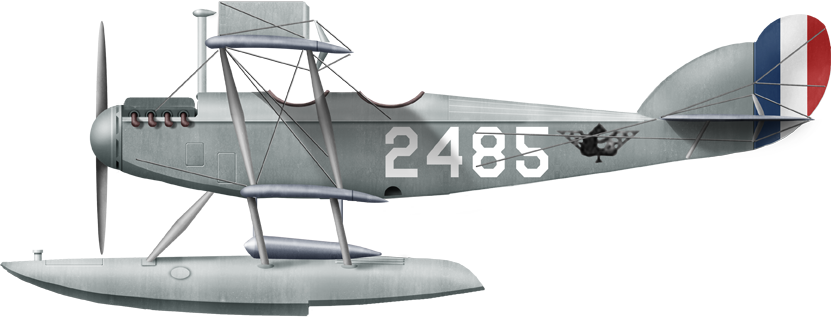
Curtiss N9H
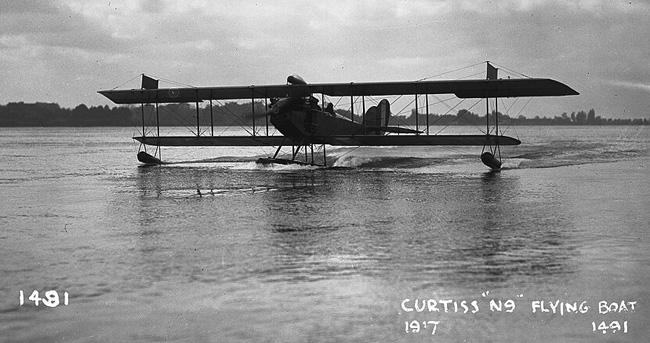
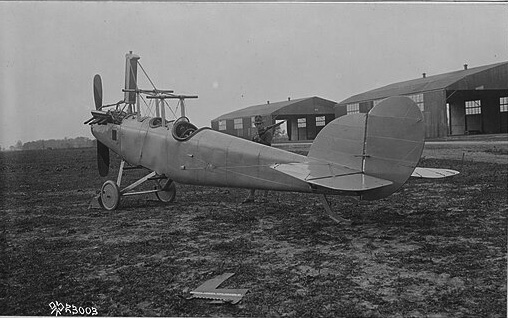
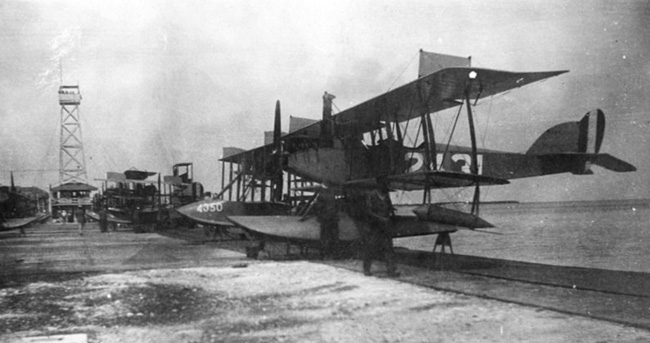
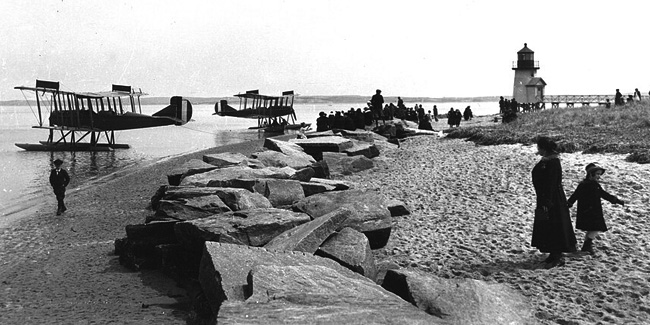

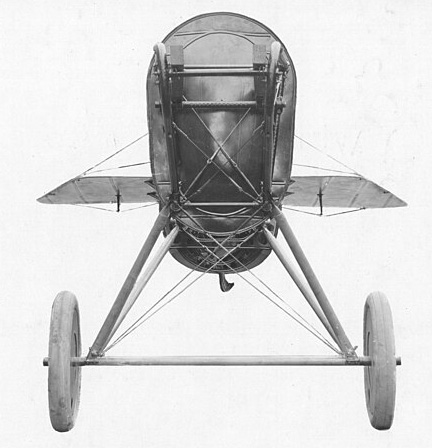



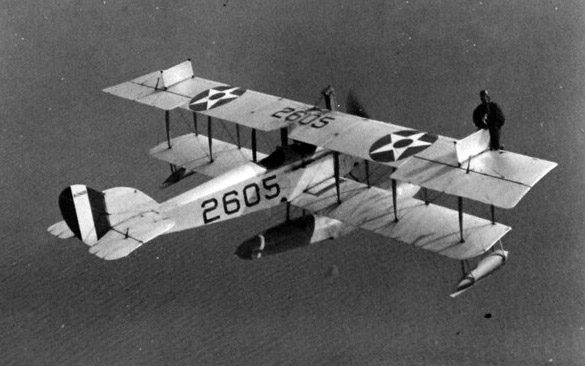
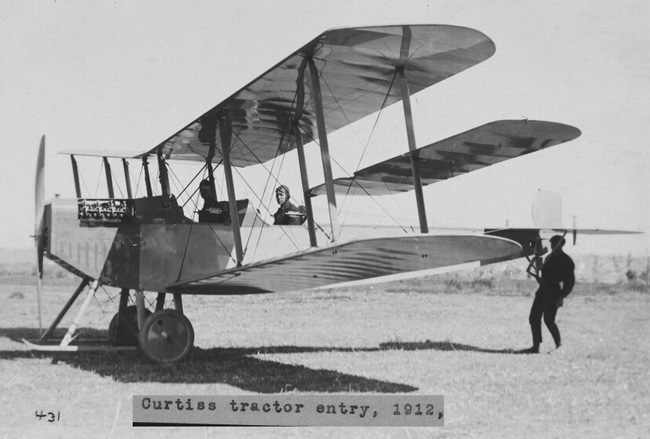
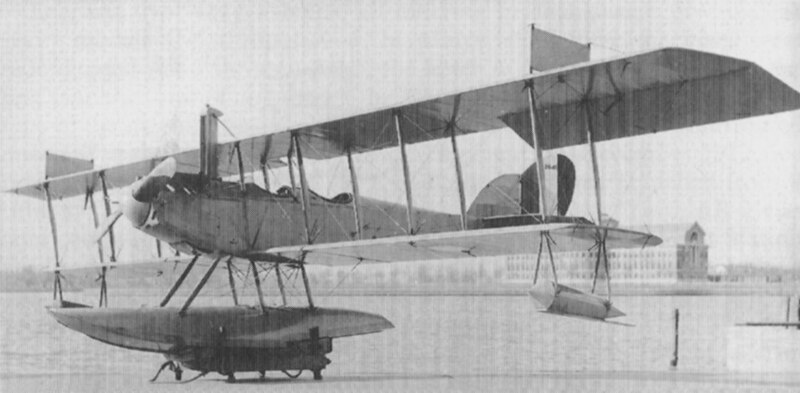
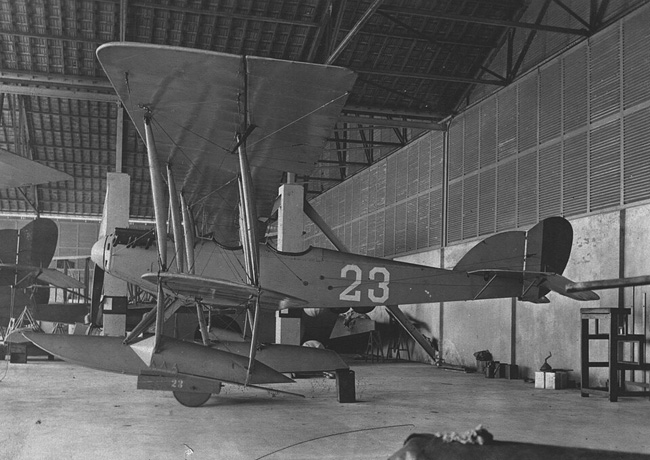
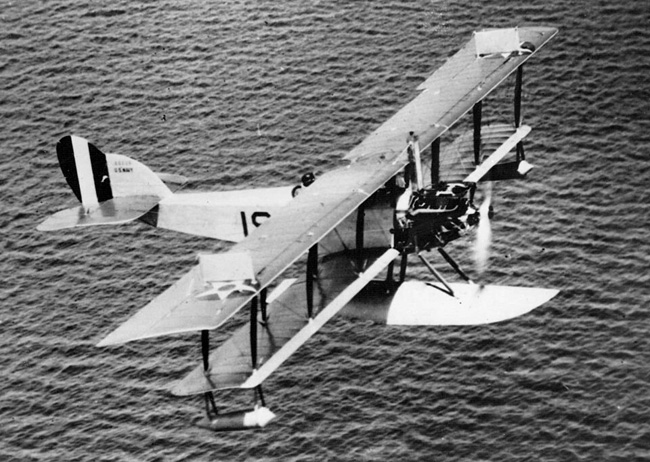
Read More and Sources
books
Bowers, Peter M. Curtiss Aircraft 1907–1947. London: Putnam, 1979.Hagedorn, Dan (March–May 1992). "Curtiss Types in Latin America". Air Enthusiast. No. 45.
National Air and Space Museum information Archived 2011-04-29
"New Curtiss Military Tractor". Aeronautics. XV (7): 104. 15 October 1914.
links
airandspace.si.edueaavintage.org
historyofwar.org/
nasm.si.edu
babel.hathitrust.org
Profile Pub. Curtiss JN (pdf)
usni.org
eaavintage.org
en.wikipedia.org CURTISS N
Model Kits
Kits on Scalemates (JN-4, but usable for scratching an N9).Video
- Lohner E (1913)
- Macchi M3 (1916)
- Macchi M5 (1918)
- Ansaldo ISVA (1918)
- Sopwith Baby (1916)
- Short 184 (1916)
- Fairey Campania (1917)
- Sopwith Cuckoo (1917)
- Felixstowe F.2 (1917)
- Friedrichshafen FF 33 (1916)
- Albatros W4 (1916)
- Albatros W8 (1918)
- Hanriot HD.2
- Grigorovitch M5
- IJN Farman MF.7
- IJN Yokosho Type Mo
- Yokosho Rogou Kougata (1917)
- Yokosuka Igo-Ko (1920)
- Curtiss N9 (1916)
- Aeromarine 39
- Vought VE-7
- Douglas DT (1921)
- Boeing FB.5 (1923)
- Boeing F4B (1928)
- Vought O2U/O3U Corsair (1928)
- Supermarine Seagull (1922)
- Blackburn Ripon (1926)
- Fairey IIIF (1927)
- Fairey Seal (1930)
- LGL-32 C.1 (1927)
- Caspar U1 (1921)
- Dornier Do J Wal (1922)
- Rohrbach R-III (1924)
- Mitsubishi 1MF (1923)
- Mitsubishi B1M (1923)
- Yokosuka E1Y (1923)
- Nakajima A1N (1927)
- Nakajima E2N (1927)
- Mitsubishi B2M (1927)
- Nakajima A4N (1929)
- CANT 18
WW1
✠ K.u.K. Seefliegerkorps:
 Italian Naval Aviation
Italian Naval Aviation
 RNAS
RNAS
 Marineflieger
Marineflieger
 French Naval Aviation
French Naval Aviation
 Russian Naval Aviation
Russian Naval Aviation
 IJN Air Service
IJN Air Service
 USA
USA
Interwar
 Interwar US
Interwar US
 Interwar Britain
Interwar Britain
 Interwar France
Interwar France
 Interwar Germany
Interwar Germany
 Interwar Japan
Interwar Japan
 Interwar Italy
Interwar Italy
- Curtiss SOC seagull (1934)
- Grumman FF (1931)
- Curtiss F11C Goshawk (1932)
- Grumman F2F (1933)
- Grumman F3F (1935)
- Northrop BT-1 (1935)
- Grumman J2F Duck (1936)
- Consolidated PBY Catalina (1935)
- Brewster/NAF SBN-1 (1936)
- Curtiss SBC Helldiver (1936)
- Vought SB2U Vindicator (1936)
- Brewster F2A Buffalo (1937)
- Douglas TBD Devastator (1937)
- Vought Kingfisher (1938)
- Curtiss SO3C Seamew (1939)
- Douglas SBD Dauntless (1939)
- Grumman F4F Wildcat (1940)
- F4U Corsair (NE) (1940)
- Brewster SB2A Buccaneer (1941)
- Grumman TBF/TBM Avenger (1941)
- Consolidated TBY Sea Wolf (1941)
- Grumman F6F Hellcat (1942)
- Curtiss SB2C Helldiver (1942)
- Curtiss SC Seahawk (1944)
- Grumman F8F Bearcat (1944)
- Ryan FR-1 Fireball (1944)
- Douglas AD-1 Skyraider (1945)
Fleet Air Arm
- Fairey Swordfish (1934)
- Blackburn Shark (1934)
- Supermarine Walrus (1936)
- Fairey Seafox (1936)
- Blackburn Skua (1937)
- Short Sunderland (1937)
- Blackburn Roc (1938)
- Fairey Albacore (1940)
- Fairey Fulmar (1940)
- Grumman Martlet (1941)
- Hawker sea Hurricane (1941)
- Brewster Bermuda (1942)
- Fairey Barracuda (1943)
- Fairey Firefly (1943)
- Grumman Tarpon (1943)
- Grumman Gannet (1943)
- Supermarine seafire (1943)
- Blackburn Firebrand (1944)
- Hawker Sea Fury (1944)
IJN aviation
- Aichi D1A "Susie" (1934)
- Mitsubishi A5M "Claude" (1935)
- Nakajima A4N (1935)
- Yokosuka B4Y "Jean" (1935)
- Mitsubishi G3M "Nell" (1935)
- Nakajima E8N "Dave" (1935)
- Kawanishi E7K "Alf" (1935)
- Nakajima B5N "Kate" (1937)
- Kawanishi H6K "Mavis" (1938)
- Aichi D3A "Val" (1940)
- Mitsubishi A6M "zeke" (1940)
- Nakajima E14Y "Glen" (1941)
- Nakajima B6N "Jill" (1941)
- Mitsubishi F1M "pete" (1941)
- Aichi E13A Reisu "Jake" (1941)
- Kawanishi E15K Shiun "Norm" (1941)
- Nakajima C6N Saiun "Myrt" (1942)
- Yokosuka D4Y "Judy" (1942)
- Kyushu Q1W Tokai "Lorna" (1944)
Luftwaffe
- Arado 196 (1937)
- Me109 T (1938)
- Blohm & Voss 138 Seedrache (1940)
Italian Aviation
- Savoia-Marchetti S.55
- IMAM Ro.43/44
- CANT Z.501 Gabbiano
- CANT Z.506 Airone
- CANT Z.508
- CANT Z.511
French Aeronavale
- GL.300 (1926-39)
- Levasseur PL.5 (1927)
- Potez 452 (1935)
- Loire 210 (1936)
- Loire 130 (1937)
- LN 401 (1938)
Soviet Naval Aviation
- Shavrov SH-2 (1928)
- Tupolev TB-1P (1931)
- Beriev MBR-2 (1930)
- Tupolev MR-6 (1933)
- Tupolev MTB-1 (1934)
- Beriev Be-2 (1936)
- Polikarpov I16 naval (1936)
- Tupolev MTB-2 (1937)
- Ilyushine DB-3T/TP (1937)
- Beriev Be-4 (1940)
-
Skoda Š-328V
R-XIII Idro
Fokker C.XI W (1934)
WW2
- De Havilland Sea Vixen
- Hawker Sea Hawk
- Supermarine Scimitar
- Blackburn Buccaneer
- Hawker Sea Harrier
- Douglas A4 Skyhawk
- Grumman F9F Panther
- Vought F8 Crusader
- McDonnell-Douglas F-4 Phantom-II
- North Am. A5 Vigilante
- TU-142
- Yak 38 forger
☢ Cold War
✧ NATO
 Fleet Air Arm
Fleet Air Arm
 US Navy
US Navy
☭ Warsaw Pact
Merch

Seafire Mark 45; HMS Pretoria Castle
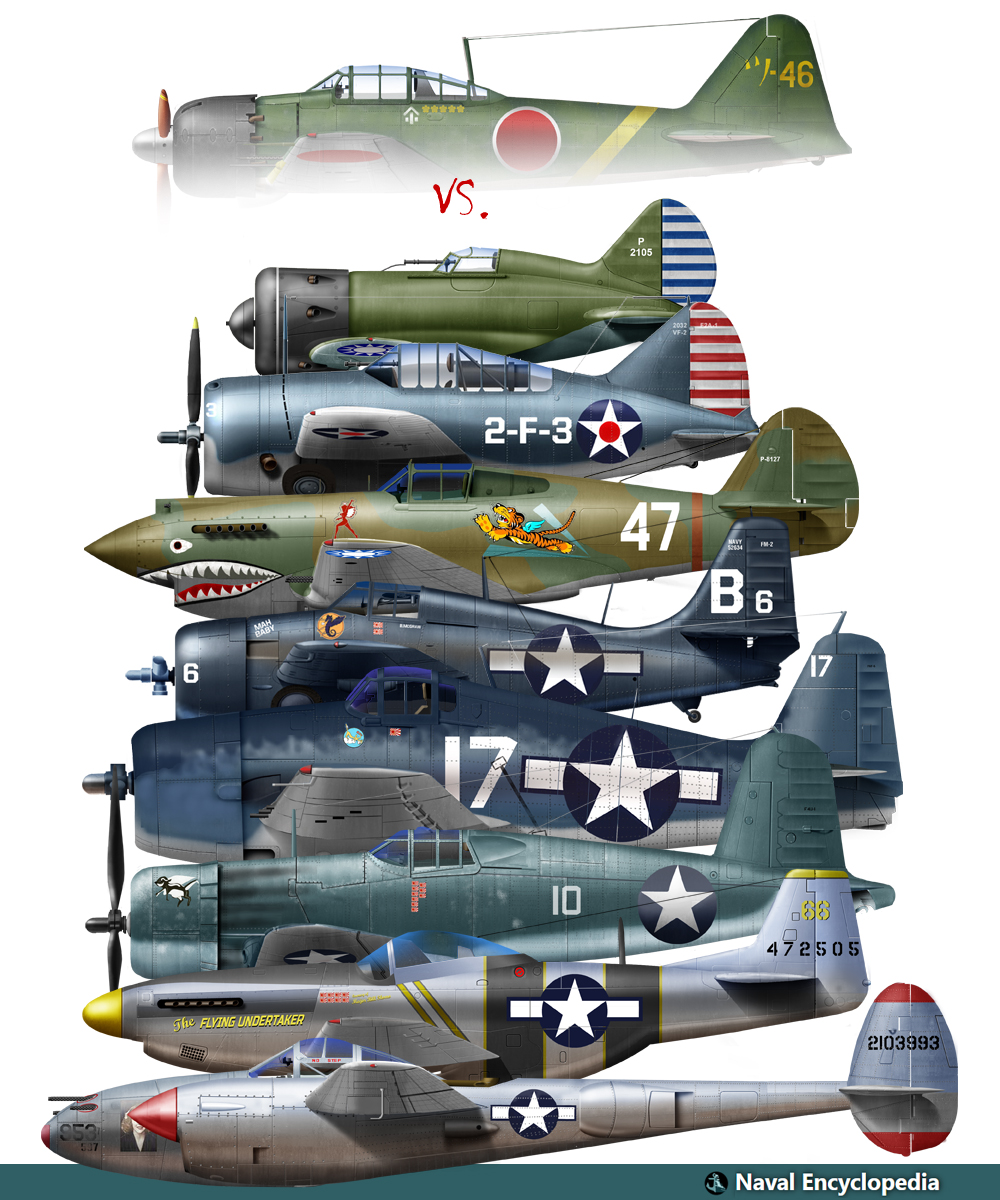
Zeros vs its aversaries
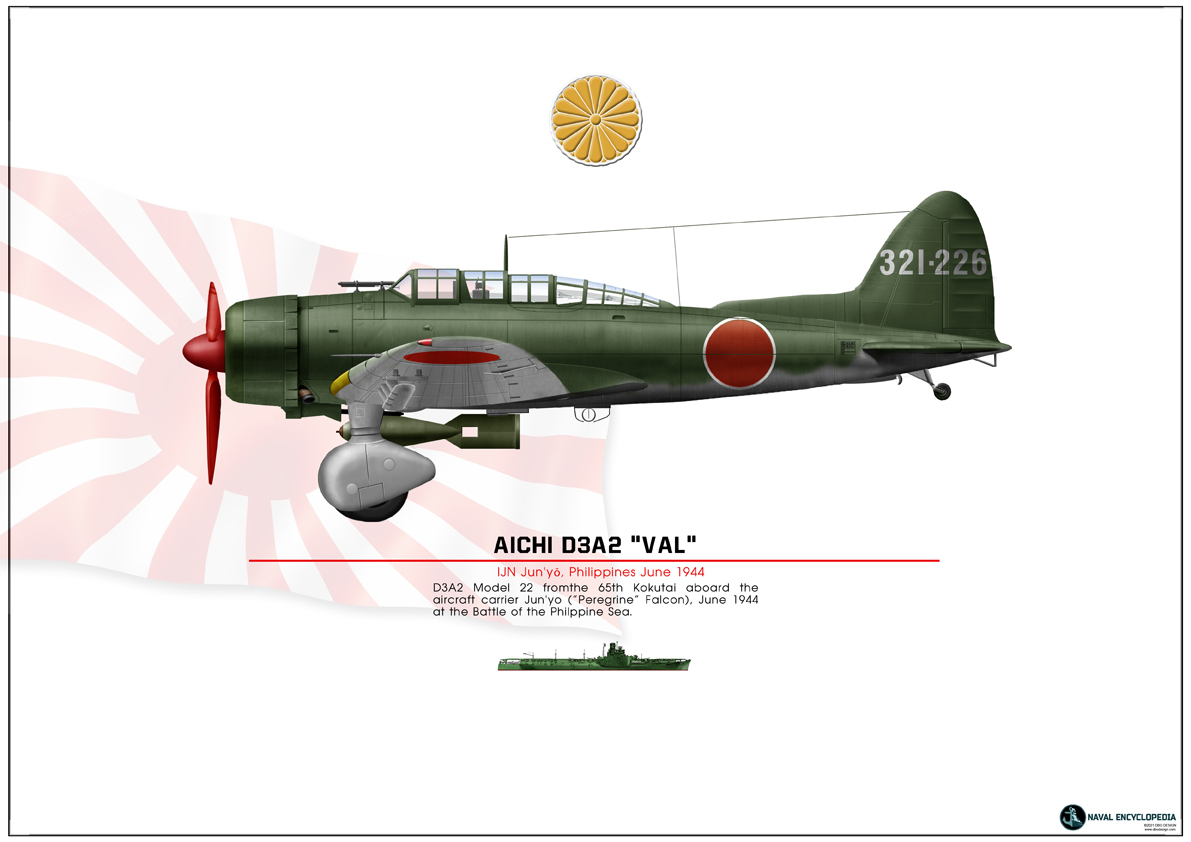
Aichi D3A “Val” Junyo
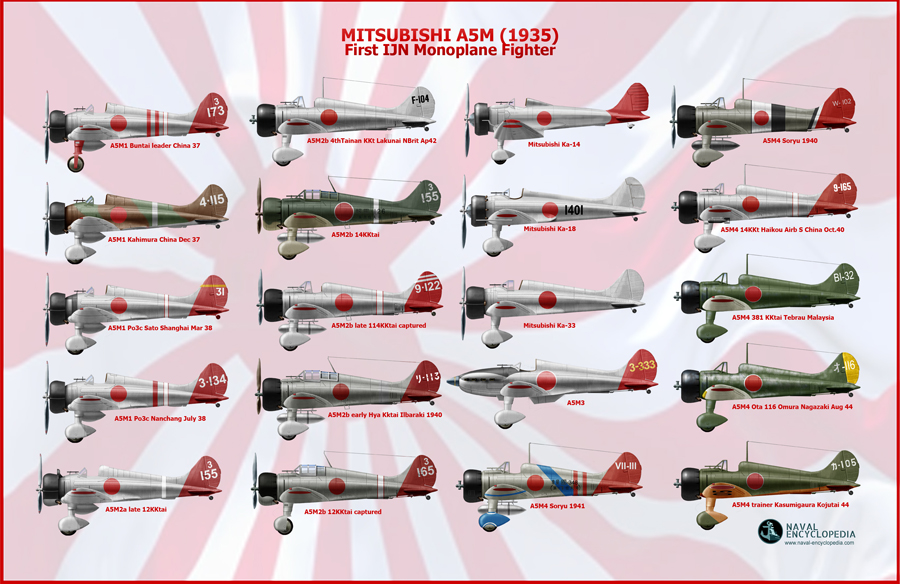
Mitsubishi A5M poster
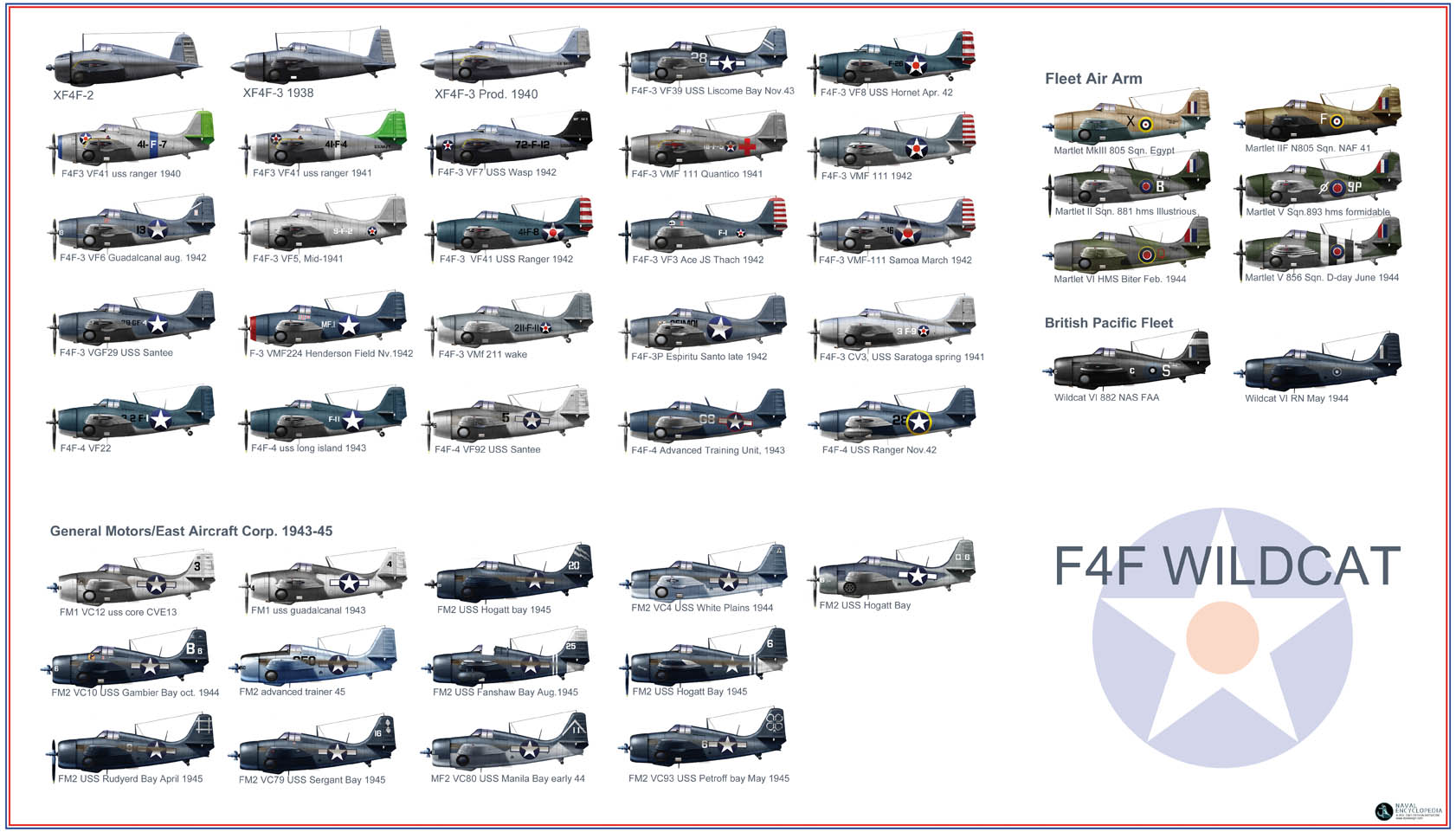
F4F wildcat
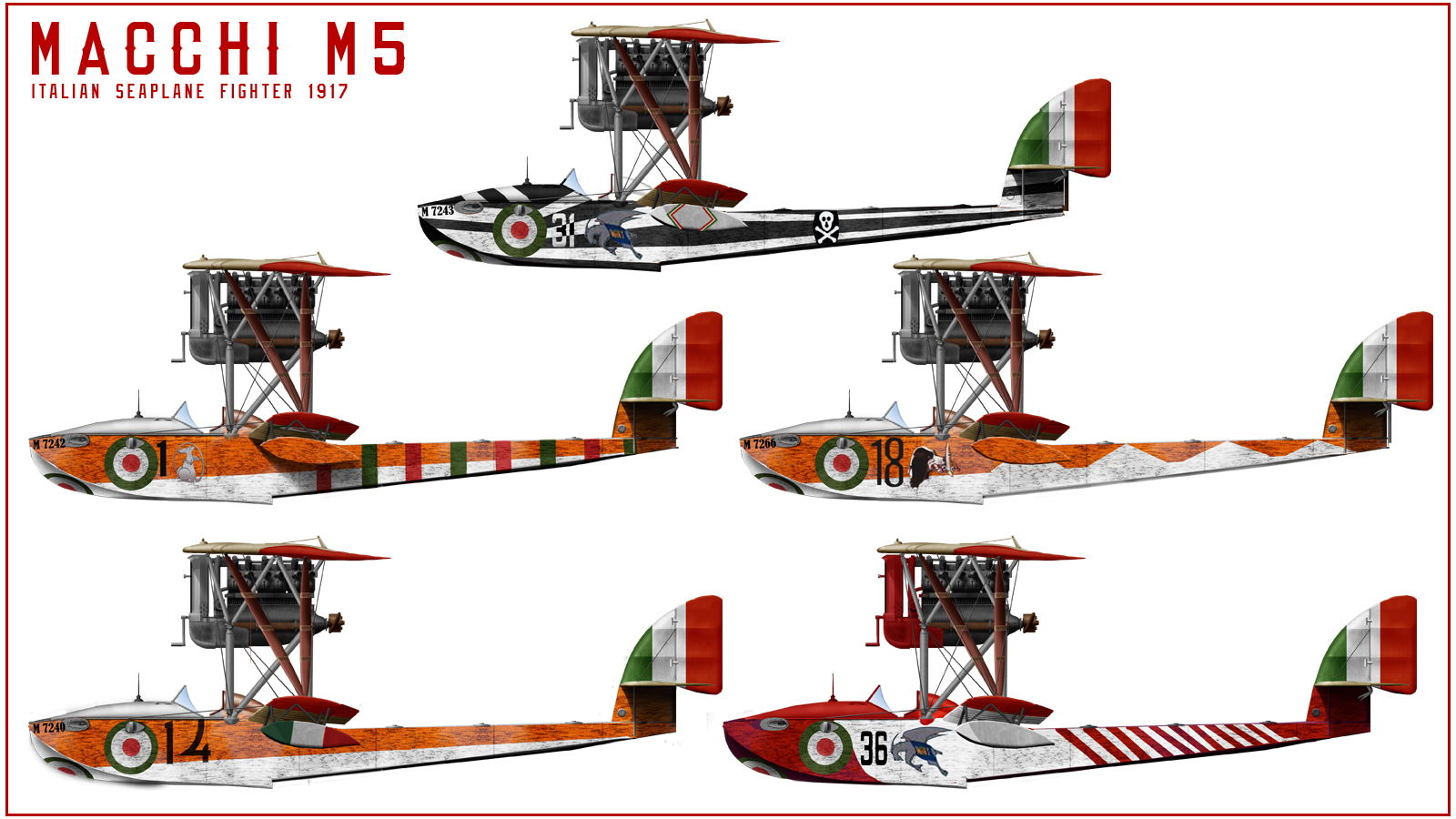
Macchi M5

SBD Dauntless Coral Sea
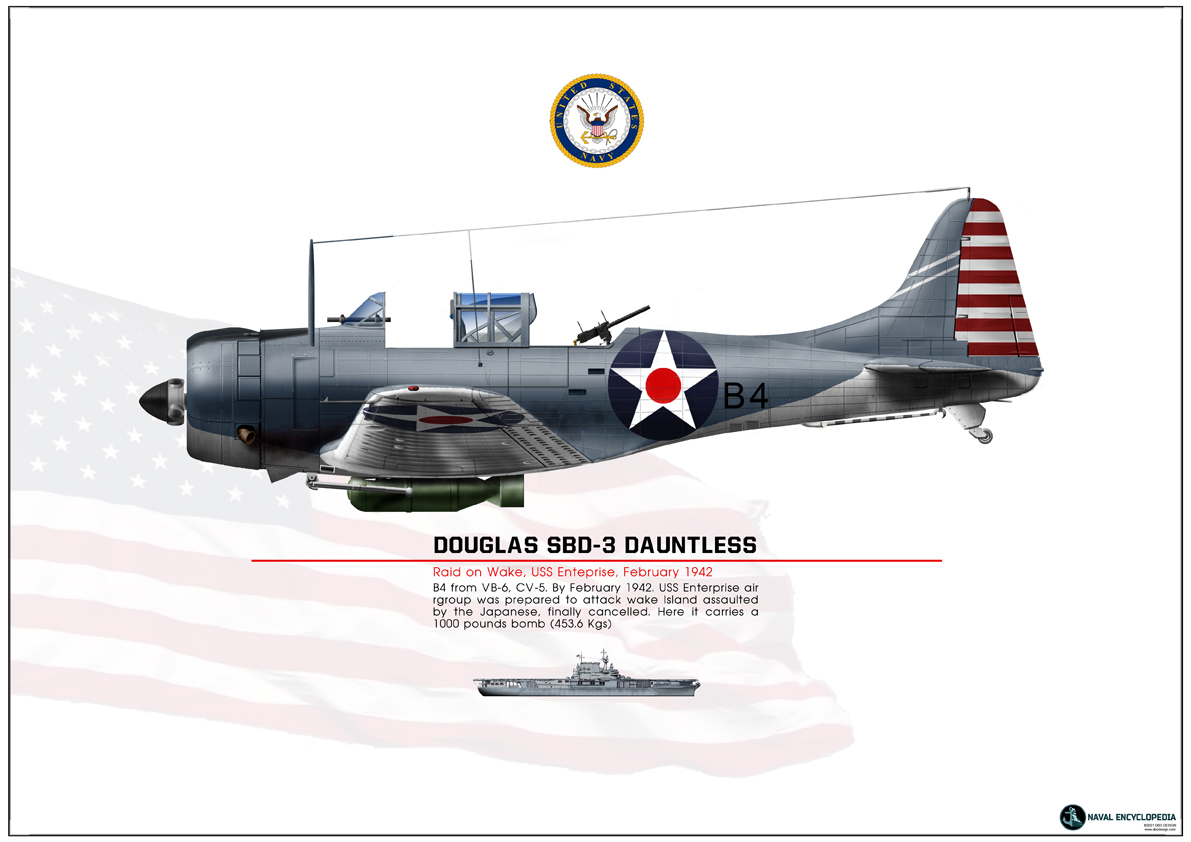
SBD Dauntless USS Enterprise
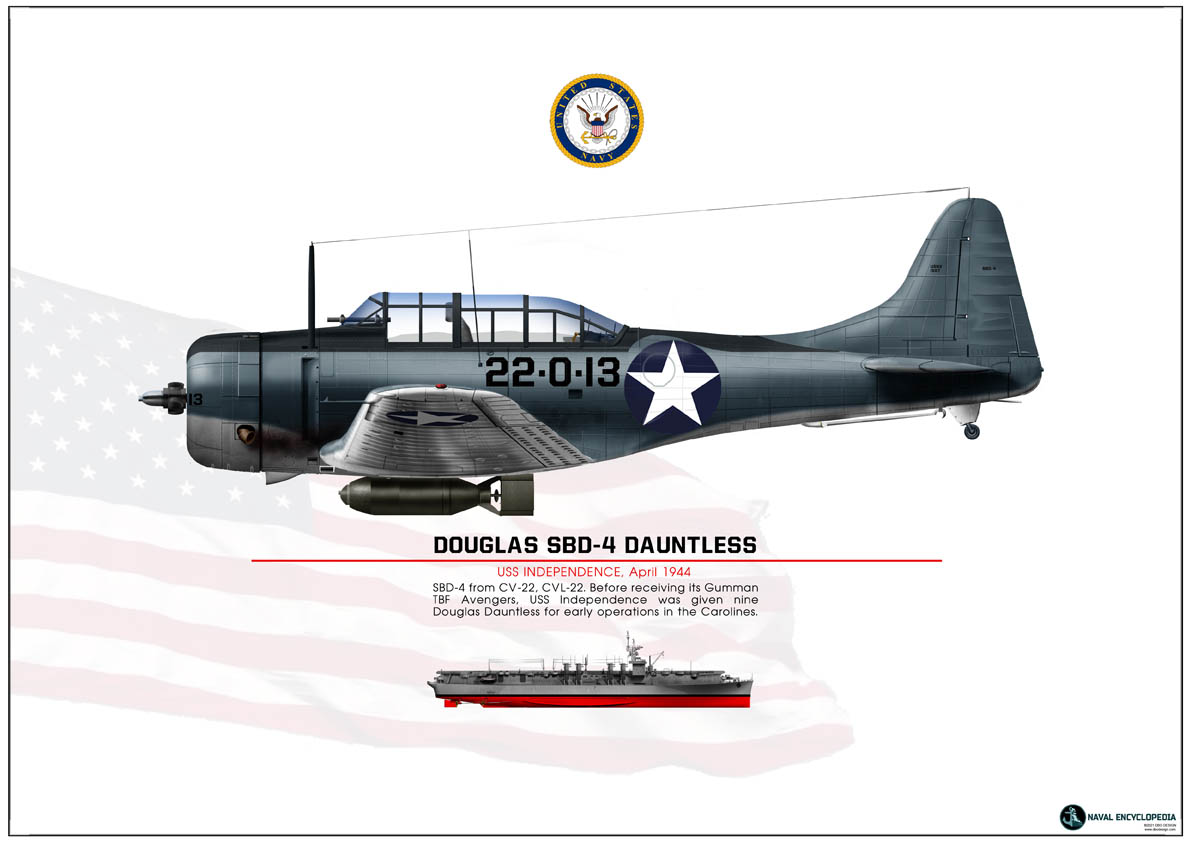
SBD-4 CV22